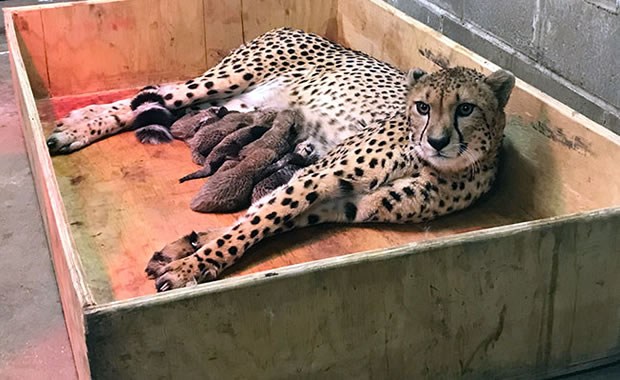Pavetta spp.
Group:
Plants
Area(s) Where Listed As Endangered:
Cameroon, Cote d'Ivoire, Democratic Republic of Congo (Zaire), Equatorial Guinea, Ghana, Guinea, Kenya, Mali, Sao Tome and Principe, Sierra Leone, Tanzania, Togo, Uganda
Species/Common Names:
| Pavetta axillipara |
| Pavetta brachycalyx |
| Pavetta holstii |
| Pavetta intermedia |
| Pavetta kupensis |
| Pavetta lasioclada |
| Pavetta linearifolia |
| Pavetta lynesii |
| Pavetta manyanguensis |
| Pavetta mollissima |
| Pavetta monticola |
| Pavetta muiriana |
| Pavetta nitidissima |
| Pavetta rubentifolia |
| Pavetta sparsipila |
| Pavetta tarennoides |
Facts Summary:
Pavetta is a genus of plants of concern and found in the following area(s): Cameroon, Cote d'Ivoire, Democratic Republic of Congo (Zaire), Equatorial Guinea, Ghana, Guinea, Kenya, Mali, Sao Tome and Principe, Sierra Leone, Tanzania, Togo, Uganda.
Creature Profile

|
Wikipedia Article Copyright Notice: This article is licensed under the GNU Free Documentation License. It uses material from the Wikipedia article "Pavetta". |
Status/Date(s) Listed as Endangered
| Scientific Name | Status | Listing Date | Range | |
| 1. | Pavetta axillipara | VU-IUCN | 1998 | Tanzania |
| 2. | Pavetta brachycalyx | EN-IUCN | 2004 | Cameroon |
| 3. | Pavetta holstii | VU-IUCN | 1998 | Tanzania |
| 4. | Pavetta intermedia | VU-IUCN | 1998 | Democratic Republic of Congo (Zaire), Uganda |
| 5. | Pavetta kupensis | CR-IUCN | 2004 | Cameroon |
| 6. | Pavetta lasioclada | VU-IUCN | 1998 | Cameroon, Cote d'Ivoire, Ghana, Guinea, Mali, Sierra Leone, Togo |
| 7. | Pavetta linearifolia | VU-IUCN | 1998 | Kenya, Tanzania |
| 8. | Pavetta lynesii | VU-IUCN | 1998 | Tanzania |
| 9. | Pavetta manyanguensis | VU-IUCN | 1998 | Tanzania |
| 10. | Pavetta mollissima | VU-IUCN | 1998 | Ghana |
| 11. | Pavetta monticola | VU-IUCN | 1998 | Equatorial Guinea, Sao Tome and Principe |
| 12. | Pavetta muiriana | EN-IUCN | 2004 | Cameroon |
| 13. | Pavetta nitidissima | VU-IUCN | 1998 | Tanzania |
| 14. | Pavetta rubentifolia | CR-IUCN | 2004 | Cameroon |
| 15. | Pavetta sparsipila | VU-IUCN | 1998 | Tanzania |
| 16. | Pavetta tarennoides | VU-IUCN | 1998 | Kenya |
Pavetta spp. Facts Last Updated:
January 1, 2016
January 1, 2016
To Cite This Page:
Glenn, C. R. 2006. "Earth's Endangered Creatures - Pavetta spp. Facts" (Online) - Licensed article from Wikipedia: The Free Encyclopedia. Accessed 7/26/2024 at http://earthsendangered.com/profile.asp?sp=19225&ID=1.
Glenn, C. R. 2006. "Earth's Endangered Creatures - Pavetta spp. Facts" (Online) - Licensed article from Wikipedia: The Free Encyclopedia. Accessed 7/26/2024 at http://earthsendangered.com/profile.asp?sp=19225&ID=1.
Need more Pavetta spp. facts?

Custom Search



